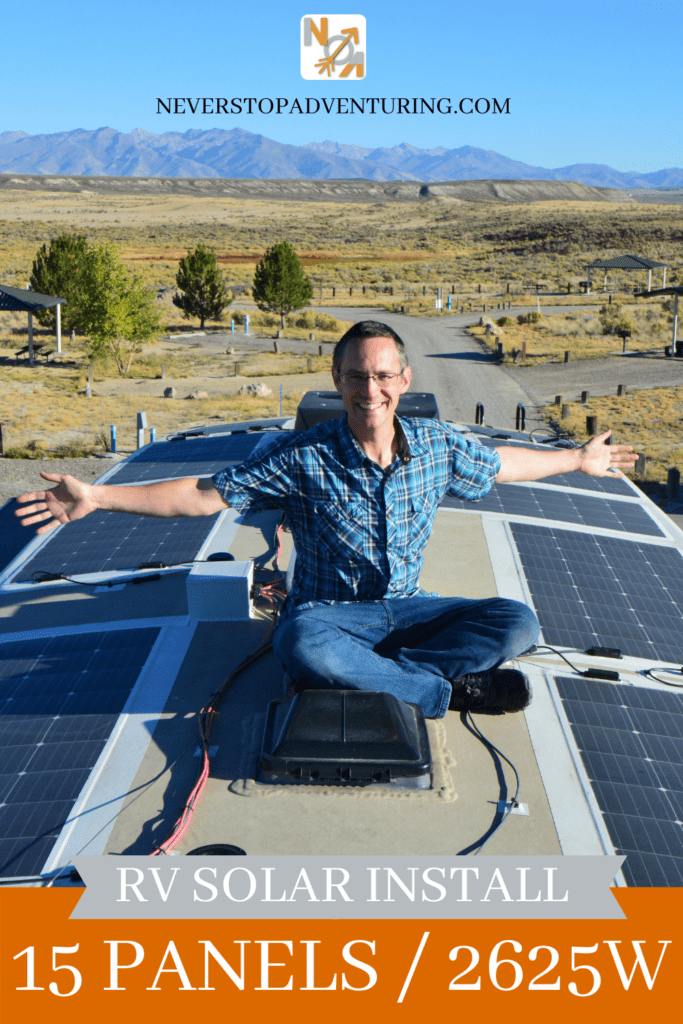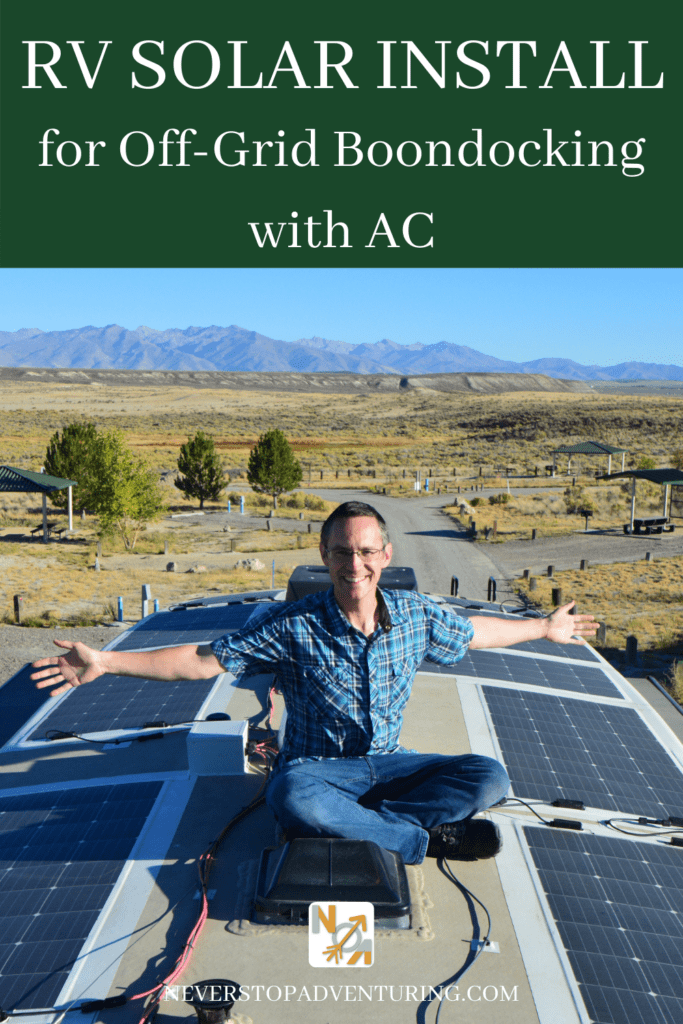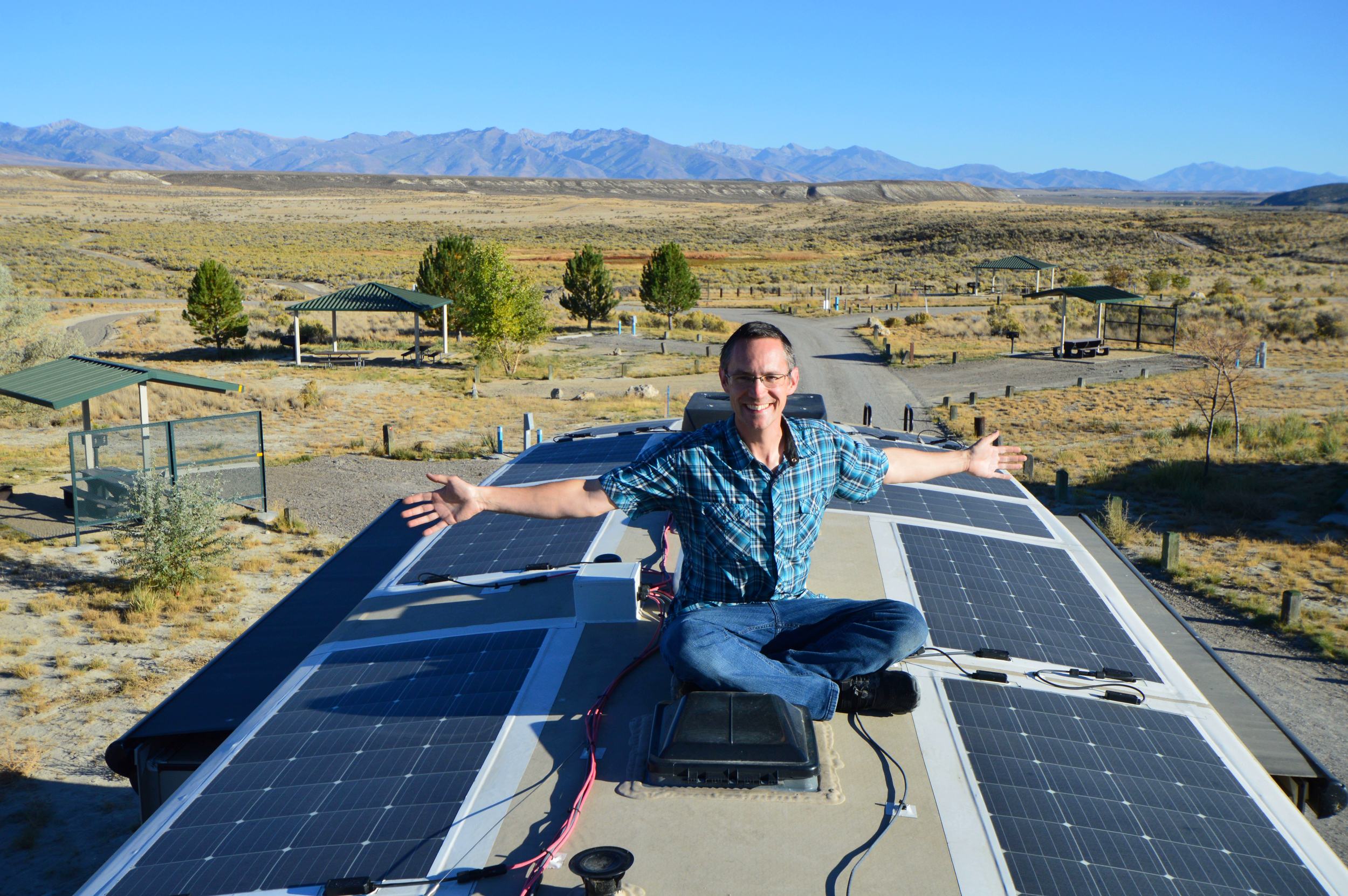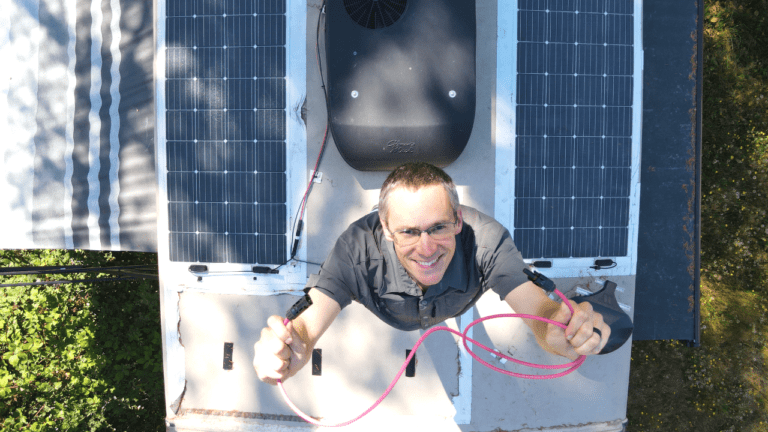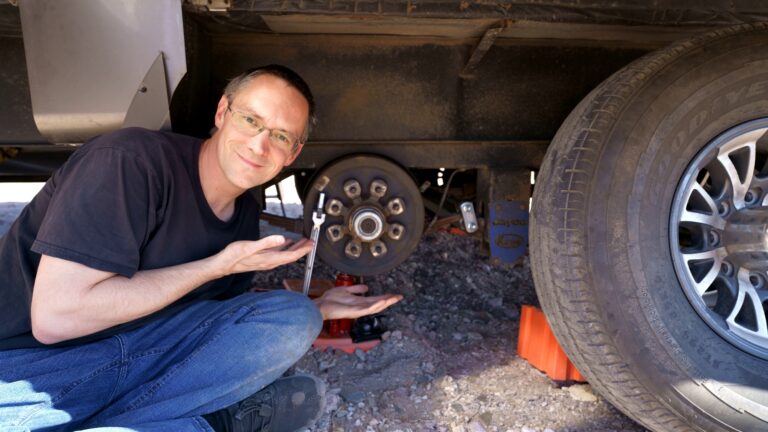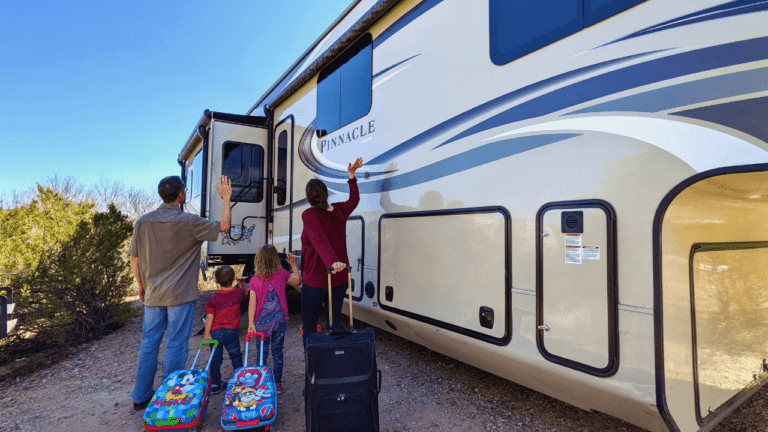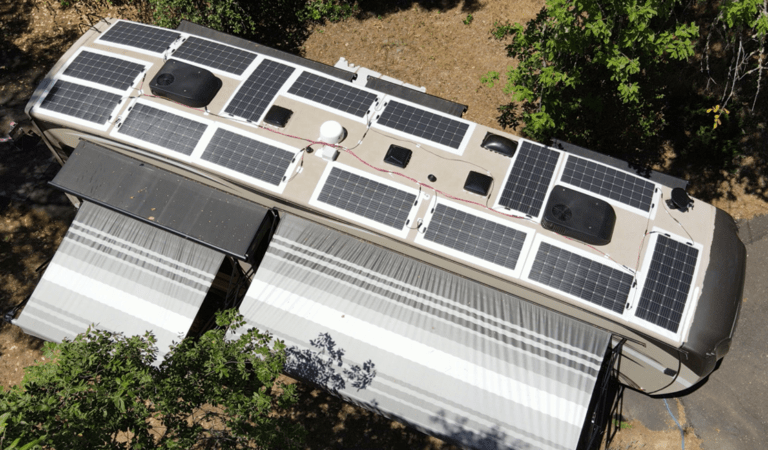RV Solar System Installation Series // 2625W of Solar for Off-Grid Boondocking with Air Conditioning
Click the video below so you can see our installation of Solar Panels, Solar Controllers, and the associated wiring for a 2625W RV solar system. We take you through each portion of the installation on our RV. Continue reading for major equipment, general costs and time involved, net weight added to the RV, and a solar usage scenario.
DISCLAIMER: This post may contain links to affiliate websites. When you click on and/or make a purchase through an affiliate link placed on our website, we may receive a small commission or other form of compensation at no additional cost to you. Please read our disclaimer for more info.
A couple of months after the batteries and inverters went in we just happened to stumble across a Memorial Day sale on the exact solar panels we had been considering. We might have waited a little longer to go ahead with this part of our RV solar install project, but why pay more later? Getting an earlier start on it ended up being really important because I completely underestimated the amount of time it was going to take to finish.
Final System Specs
- 2625W of Solar Panels
- 600AH of Lithium Batteries at 12V
- 2 3kW Inverters
Equipment and General Costs
- 175W Renogy Flexible Solar Panels x15: https://amzn.to/3uCAJy8
- 15A In-Line MC4 Fuse x5: https://amzn.to/3fYPdmL
- Victron SmartSolar MPPT 150/100 Charge Controllers with VE.Can: https://amzn.to/34FSaTP
- Victron Data Cables x3: https://amzn.to/3vHk1io
- Roof Junction Box: https://amzn.to/3vHwXF5
- M20 2-Hole Cable Gland (sorry, no link available because supply changes so quickly)
- 3/4″ NPT 4-Hole Cable Gland x2 (sorry, no link available because supply changes so quickly)
- MC4 Crimpers: https://amzn.to/3yT97rS
- MC4 Connectors: https://amzn.to/3pbD2Hl
- 100’ Red 10AWG Photovoltaic (PV) Wire: https://amzn.to/34yMRFT
- 100’ Black 10AWG Photovoltaic (PV) Wire: https://temcoindustrial.com/10-awg-solar-panel-wire-sw0004-100-ft-ul-4703-power-cable-black-made-in-usa/
- UV Resistant Zip Ties: https://amzn.to/3p7GNxo
- 120A Fuses for Solar Controllers x3: https://amzn.to/34wUexF
- 75’ Red and 75’ Black 2AWG Wire: https://amzn.to/2SKiBFc
- Roof Repair Tape: https://amzn.to/3c6wRPG
- Cable Lugs, Ring Terminals, Terminal Posts from various other suppliers
By the time we finished this project in the summer of 2020, we had spent just over $7900 on this portion of it.
Time Involved
It took me 6 weeks from start to finish to complete part 2 of our RV solar install and that doesn’t include the planning phase! Again, I didn’t work on it all day everyday. I also ran into a lot of shipping delays due to Covid.
Net Weight Added to RV
| Component | Weight Added or Removed (approximate lbs) |
| Solar Panels | 93 |
| Solar Controllers | 30 |
| Inverters | 85 |
| Wiring | 100 |
| Batteries + Box | 185 |
| Lugs, etc. | 10 |
| Fuses | 5 |
| Batteries out | -104 |
| Wires out | -5 |
| TOTAL | ~400 lbs added |
Solar Usage Scenario
It’s late September and we are parked without hookups on the side of a lake in Utah. We got in around 5pm the day before with 100% battery level, but it was 87 degrees in the trailer when we got set up. We were bringing in only 700watts at that time of day. I knew I’d need to run both ACs for a while to get the temperature down.
So, I run our little Honda generator and set the system to draw a constant 900watts from it. I like this level of power draw from our generator. It still runs quietly enough that I can’t hear it from inside with the AC going. Of course I’d prefer not to run it at all, but hey, I have to run 2 air conditioners for a couple of hours way outside of peak sun hours. I shut off the generator when the sun goes down and the battery bank is at 72%.
The Next Day
We all get up at 8am the next day to find the batteries at 51%. The panels are bringing in about 150 watts. We open up all the windows after breakfast to help keep things cool while the batteries recharge. The weather says we’ll have a high of 85 degrees today.
By 1pm the batteries are full. It’s almost solar noon, but it’s a little hazy out from some of the California wildfire smoke so we’re only pulling in 1650 Watts, which is plenty. The thermostat inside says its 79, so I close the windows and set the AC to 77 degrees. At this point I think I’ll let it run until the batteries are around 70% since that’s where things were yesterday and I was able to recharge no problem. Other power draws on the system that day were computers, some lights, and a dishwasher cycle (using water heated via propane water heater).
I turned the AC off at 5pm with 62% battery remaining. We are still bringing in 750W from the roof but it’s slowly tapering off. The batteries recharge back to 67% by the time the sun was low enough to force us to draw battery power again. This makes for a repeatable experience the next day.
Travel Use Scenario
Another fun use scenario worth mentioning is that we can run the batteries down to almost zero if we are traveling the next day. We’ve hit the road with only 5% remaining before and were back at 100% after a 5 hour drive since the sun never takes a break.
Questions about our RV Solar Install?
What other questions do you have about part 2 of our RV solar system installation solar panel and controller install that we didn’t cover in the video? Please let us know so that we can answer them for you!
Be sure to subscribe and hit the notification bell over on our YouTube channel so you don’t miss any of our future RV and travel videos.
If you liked this post, would you share it with friends? Thank you!
If you missed part 1 of the solar installation series where we upgraded the batteries and inverters, you can catch it below. You can also see our RV tour or read more about the buying and inspection process for our truck and RV and other RV related features in some of our other posts:
- RV Solar System Lessons Learned
- RV Solar System Installation Series // 7.2kWh Batteries & 6kW Inverter Upgrade
- RV TOUR // Full Time Family of 4 // Living in a Jayco Pinnacle 37MDQS
- Purchasing our 2016 RAM 3500 Dually
- RV Office Setup and Connectivity
- RV Dishwasher Installation
Pin For Later:
